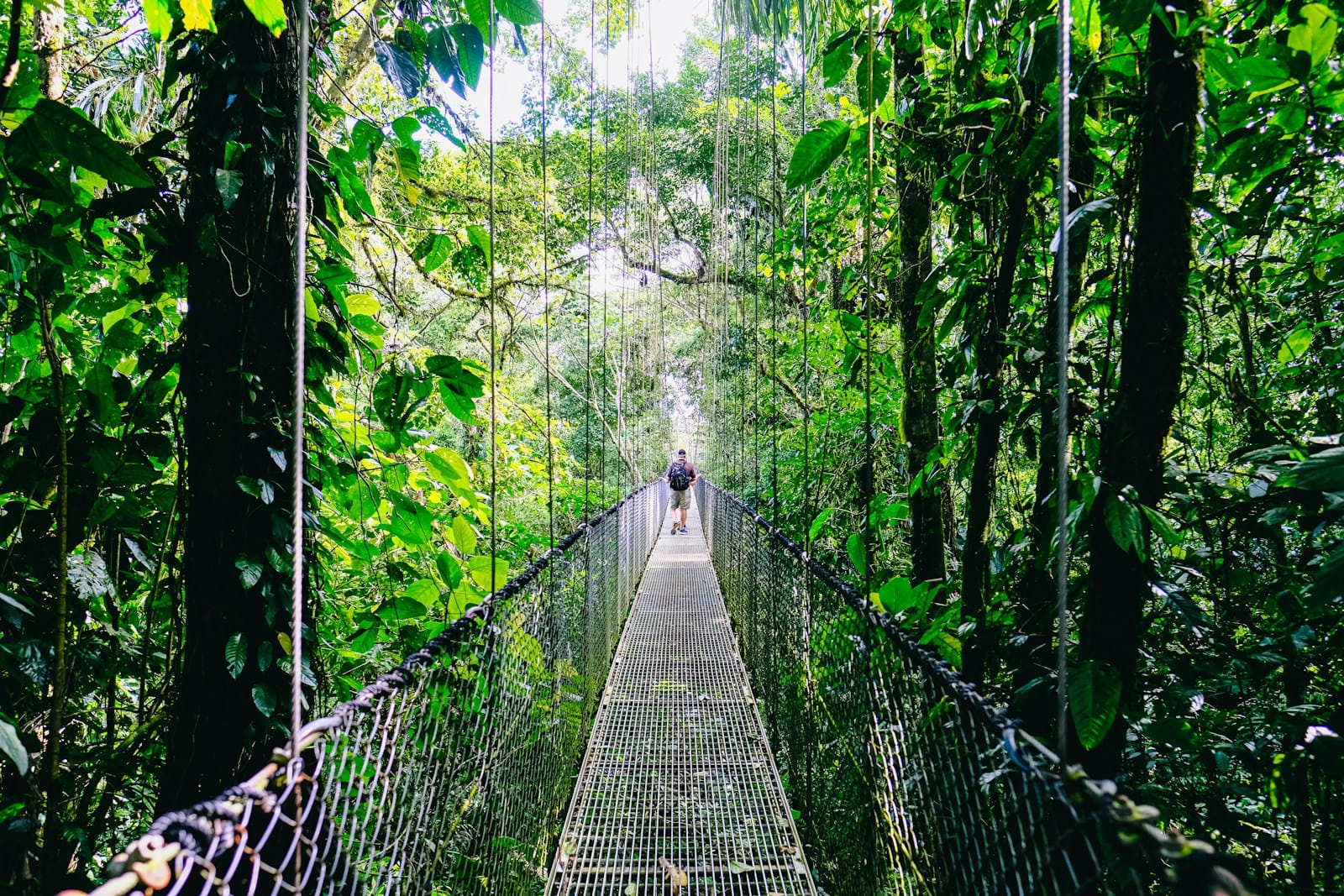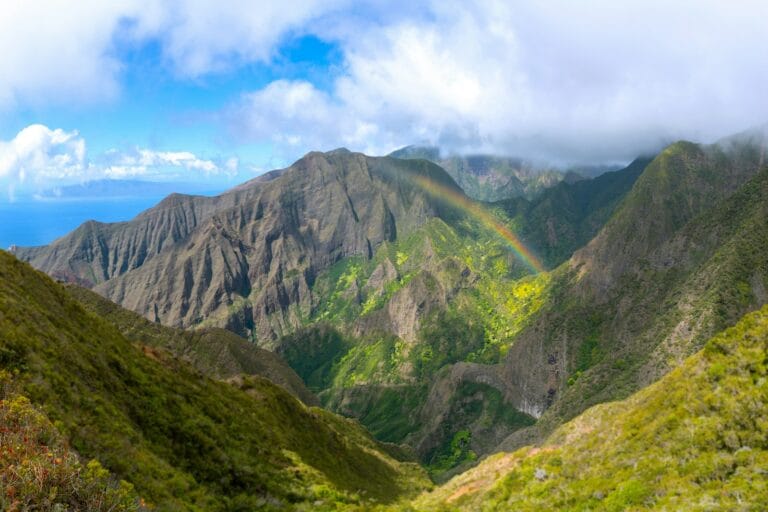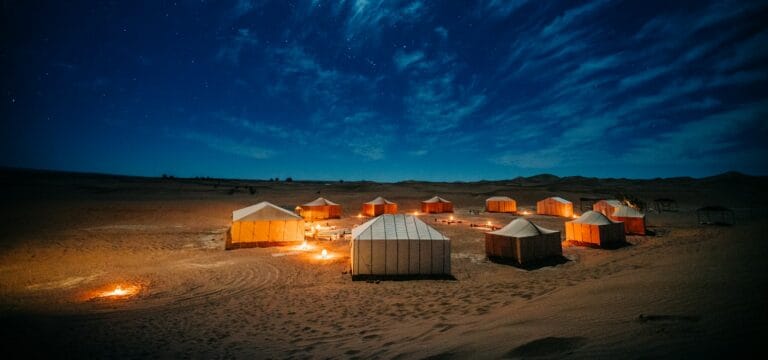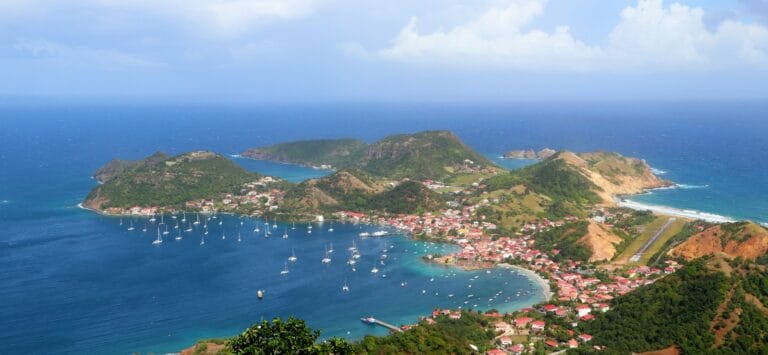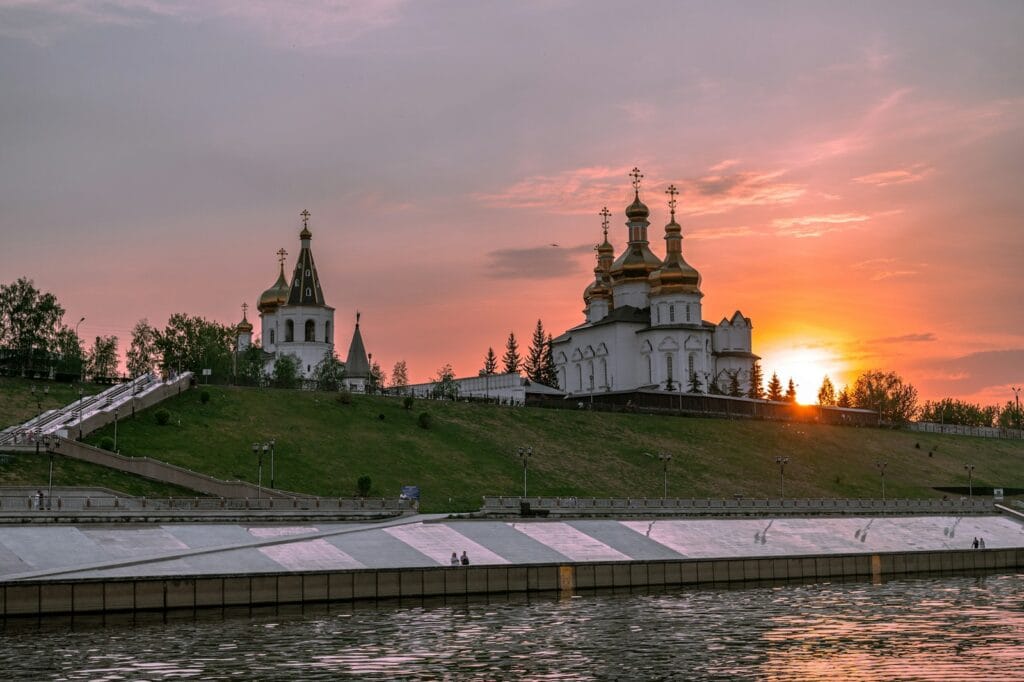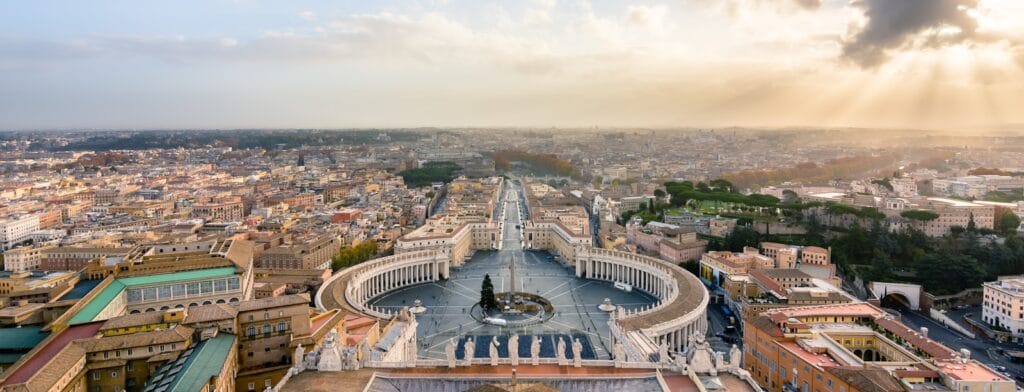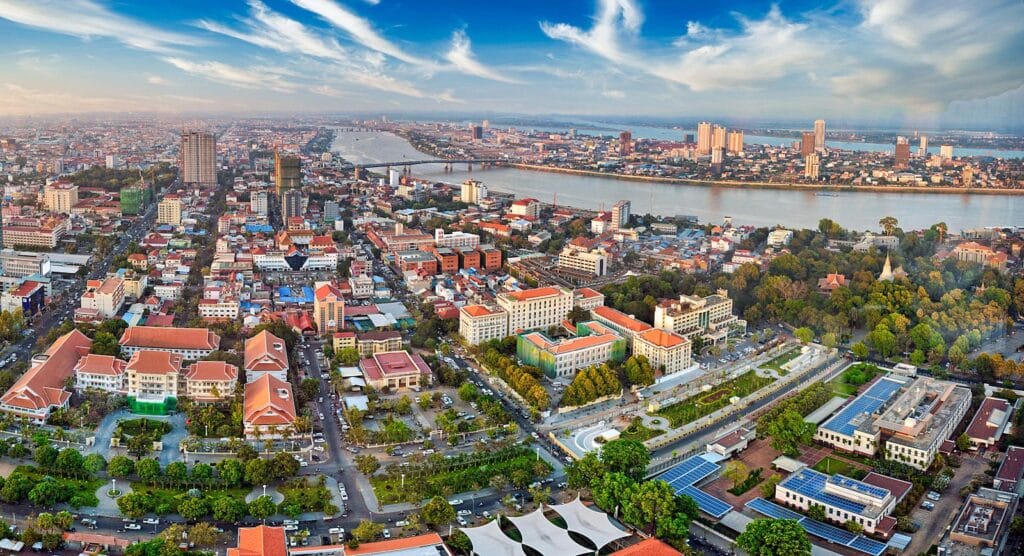Costa Rica Travel Guide: Wild Beauty, La Pura Vida
Intro to Costa Rica Travel Guide
Costa Rica is a land of lush rainforests, smoldering volcanoes, and paradise beaches — where sloths hang from trees and locals greet you with a warm “pura vida.” This is nature at its wildest and most welcoming.
Start planning your journey with our complete Costa Rica Travel Guide — including the best time to visit Costa Rica, travel cost breakdowns, places to visit in Costa Rica, epic things to do in Costa Rica, and unforgettable Costa Rica tours through rainforests, rivers, and cloud-kissed mountains.
Book immersive Costa Rica tours and experience unforgettable things to do in Costa Rica — from sacred temple rituals and highland treks to floating markets and lakeside food adventures.
Continent: North America (Central America region)
Country: Costa Rica
Area: ~51,100 km²
Population: ~5.2 million (2024)
Density: ~102 people/km²
Capital: San José
Regions/Subregions: Central Valley, Caribbean Coast, Pacific Coast, Northern Plains, Nicoya Peninsula, South Pacific
Language(s): Spanish (official); English widely spoken in tourist areas
Currency: Costa Rican Colón (CRC); USD accepted in many places
Time Zone(s): Central Standard Time (GMT−6), no daylight saving
Airports: SJO (San José), LIR (Liberia), LIO (Limón), TMU (Tambor)
Climate: Tropical and subtropical — wet and dry seasons vary by coast
Known For: Eco-tourism, volcanoes, cloud forests, beaches, wildlife, pura vida lifestyle
Visa-free entry for up to 90 days for most passport holders including U.S., Canada, EU, Australia, and UK
Passport must be valid for at least 3 months
Proof of onward travel required
Entry by land, air, or sea allowed — many travelers cross from Nicaragua or Panama
Official visa information: Costa Rica Immigration Portal
Recommended vaccines: Hepatitis A & B, Typhoid, Rabies (if rural or animal contact), Yellow Fever (required from certain countries)
Malaria is rare but mosquito protection is essential; dengue is a concern in coastal and lowland areas
COVID-19 no longer requires proof of vaccination
Quality hospitals in San José; more limited in remote areasTravel health updates — get coverage here
Stay Informed with Official Updates: World Health Organization – International Travel and Health | Centers for Disease Control and Prevention – Global Travel Health
Generally safe for travel — ranked among Latin America’s most stable countries
Watch for petty theft in urban and beach areas; use hotel safes and don’t leave items in cars
Exercise caution in some San José neighborhoods at night
Stay Informed with Official Updates: US Travel Advisory | UK Foreign Travel Advice
New Year’s Day: January 1
Juan Santamaría Day: April 11
Independence Day: September 15
Christmas Day: December 25
Maundy Thursday & Good Friday: Holy Week — closures common
National holidays often create long weekends; plan around crowds.
Currency: Costa Rican Colón (CRC); U.S. Dollars accepted widely
Cards: Visa and MasterCard accepted in most cities and resorts
ATMs: Available in all towns; dispense both CRC and USD
Tipping: 10% typically included in bills, but extra tip appreciated
Duty-Free Allowance: Up to 500g of tobacco, 5L alcohol, gifts under $500
Rental Cars: Available but roads can be rough — 4WD recommended in rural areas
Buses: Extensive and cheap but slow; best for budget travelers
Domestic Flights: San José to beach towns like Nosara, Drake Bay, or Puerto Jiménez
Shuttles & Taxis: Easy to book between tourist hubs; shared vans common
Apps: Uber works in San José and parts of the Pacific Coast
SIM Cards: Kolbi, Movistar, Claro — available at airports and shops
Coverage: Strong in cities and major tourist areas; patchy in rainforests and coasts
Wi-Fi: Free in most hotels, cafes, hostels
Remote Work: Increasingly popular with digital nomads — coworking in Tamarindo, Nosara, and Santa Teresa
Drinking Age: 18
Public Drinking: Prohibited in public spaces
Cannabis: Illegal, though small-scale possession often decriminalized
LGBTQ+ Rights: Legal and protected; marriage equality as of 2020
Cultural Norms: “Pura Vida” is both a greeting and a way of life — polite, easygoing, friendly
Emergency Numbers:
Police: 911
Ambulance: 128
Fire: 118
Tourist Police: Present in beach towns and San José
Embassy: Most countries have embassies in San José
Travel Insurance: Strongly recommended for medical, car rental, and adventure sports
Dry Season (Verano): December–April — best for beaches and adventure
Rainy Season (Invierno): May–November — lush landscapes, fewer crowds
Caribbean Coast: Rainier year-round; best weather in Sept–Oct
Temps: 25–35°C (77–95°F) in lowlands; cooler in mountains
Best time: February–April for Pacific; September–October for Caribbean
Weather Forecast
Costa Rica by Region – Where to Go
Explore Costa Rica’s regions from volcano-studded highlands to remote beaches and rainforests. This section helps you choose where to go based on geography, culture, and travel experience.
Central Valley & Highlands
San José, Cartago, Heredia, Alajuela
- San José: Costa Rica’s capital is a cultural gateway with museums, markets, and easy airport access.
- Cartago: The former colonial capital and home to the famed Basilica de Los Ángeles.
- Orosi Valley: Scenic drives, coffee farms, and thermal hot springs surrounded by cloud forest.
Caribbean Coast
Limón, Puerto Viejo, Tortuguero
- Puerto Viejo: Afro-Caribbean culture, surf beaches, and wildlife-filled jungle lodges.
- Tortuguero: Known as the “Amazon of Costa Rica,” with canals and nesting sea turtles.
- Cahuita: National park meets reef and rainforest with excellent snorkeling and local flavors.
Northern Lowlands
La Fortuna, Arenal, Sarapiquí
- Arenal Volcano: Iconic peak surrounded by hot springs, waterfalls, and jungle hikes.
- La Fortuna: Adventure hub for ziplining, canyoning, and wildlife excursions.
- Sarapiquí: A birder’s paradise with riverside eco-lodges and guided night walks.
Pacific Northwest (Guanacaste)
Liberia, Tamarindo, Nosara, Santa Teresa
- Tamarindo: Surf-town vibes, sunset dining, and nightlife by the waves.
- Nosara: Yoga retreats, unspoiled beaches, and laid-back jungle life.
- Liberia: Gateway city to beaches and national parks, with an international airport.
Central & South Pacific Coast
Jacó, Manuel Antonio, Dominical, Osa Peninsula
- Manuel Antonio: The most popular national park — beaches meet dense wildlife trails.
- Dominical: Surf, whales, and a bohemian vibe.
- Osa Peninsula: Remote, rugged, and rich with biodiversity — home to Corcovado National Park.
Top Places to Visit in Costa Rica
From Caribbean surf towns to misty cloud forests, these are the most unforgettable places to visit in Costa Rica for nature, culture, and outdoor adventure.
Nature & Wildlife Hotspots
- Monteverde Cloud Forest: Misty trails, hummingbirds, and suspended bridges in the sky.
- Tortuguero National Park: See turtles nest and explore river jungles by boat.
- Corcovado National Park: One of the most biodiverse places on Earth.
Beach Escapes
- Santa Teresa: Wild beaches, luxury villas, and a barefoot lifestyle.
- Tamarindo: Easy access surf and beach culture with family resorts.
- Uvita & Marino Ballena: Whale watching and the famous whale-tail sandbar beach.
Adventure Towns
- La Fortuna: Hot springs, volcano views, and adrenaline sports in one small town.
- San Gerardo de Dota: Hidden mountain retreat with top-notch birding.
- Turrialba: River rafting capital and gateway to Guayabo archaeological site.
Cultural Cities
- San José: Museums, markets, and nightlife mixed with Costa Rican daily life.
- Cartago: Historic churches and cultural heritage in the Central Valley.
- Grecia & Sarchí: Artisan hubs known for oxcarts, woodwork, and vibrant local markets.
How to Choose Where to Go in Costa Rica
Not sure where to begin? This section offers smart pairings and ideas based on your travel goals — whether you’re chasing wildlife, waves, or waterfalls.
- For Wildlife: Choose Osa, Tortuguero, or Sarapiquí for howler monkeys, jaguars, and sloths.
- For Beaches & Surf: Tamarindo, Santa Teresa, and Puerto Viejo deliver waves and sunsets.
- For Volcanoes & Hot Springs: Base yourself in La Fortuna or Rincón de la Vieja.
- For Off-the-Beaten-Path: Explore Nicoya Peninsula, Turrialba, or the upper Central Highlands.
- Efficient Pairings: Arenal + Monteverde + Pacific Coast makes for a perfect 10-day combo.
How to Get Around Costa Rica
Costa Rica offers flexible transport options — from rental cars and domestic flights to scenic boat rides. Here’s how to travel smoothly between regions.
- Domestic Flights: Sansa Air and Green Airways connect key towns like Drake Bay, Nosara, and Tortuguero.
- Private Transfers & Shuttles: Comfortable and efficient for hotel-to-hotel routes.
- Rental Cars: Ideal for flexibility; 4×4 is recommended for Nicoya and mountain routes.
- Public Buses: Budget-friendly and widespread, but less convenient for remote areas.
- Boat Transfers: Common to Tortuguero and Osa Peninsula lodges.
Pro Tip: Waze works better than Google Maps in Costa Rica. Download offline maps for rural routes.
Travel Budget & Costs in Costa Rica
Get a clear look at the travel cost in Costa Rica with real-world pricing for food, tours, and accommodations. Learn how to plan for your style and save where it counts. Costa Rica is mid-range by Latin American standards, but excellent for eco-adventure value.
- Budget: $40–60/day — Hostels, buses, street food
- Mid-Range: $80–150/day — Comfortable ecolodges, transfers, tours
- Luxury: $200+/day — Boutique jungle resorts, private tours, gourmet meals
Sample Costs:
- Park Entry Fee: $10–18
- Day Tour (zipline/rafting): $40–80
- Local Soda Meal: $5–8
- Shuttle (3-hour route): ~$40
- Coffee Tour: $25–40
Tips: Book activities directly with local operators. Avoid peak-season (Dec–Jan, Holy Week) if on a budget.
Best Time to Visit Costa Rica
Costa Rica’s seasons vary by coast and altitude. Here’s when to go for sunshine, wildlife sightings, or lush green landscapes — plus festival timing tips.
- Dry Season (Dec–April): Ideal for coastlines, national parks, and volcano views.
- Green Season (May–Nov): Lush forests, fewer tourists, and better deals — with short daily rains.
- Peak Wildlife Viewing: July–Oct for whales, March–May for turtles, year-round for monkeys and sloths.
The best time to visit Costa Rica depends on your itinerary: dry season for beaches, rainy season for waterfalls and fewer crowds.
Must-See Experiences in Costa Rica
These iconic activities define the pura vida spirit — from ziplines and hot springs to whale watching and jungle treks.
- Zipline across Monteverde’s cloud forest canopy
- Soak in volcanic hot springs beneath Arenal
- Kayak Tortuguero’s jungle canals at sunrise
- Snorkel coral reefs off Cahuita or the Pacific islands
- Watch humpback whales off Uvita
- Catch a surf lesson in Nosara or Santa Teresa
- Release baby turtles into the sea
- Hike to the Rio Celeste’s bright turquoise waterfall
Book immersive Costa Rica tours and experience unforgettable things to do in Costa Rica — from sacred temple rituals and highland treks to floating markets and lakeside food adventures.
Best Travel Itineraries in Costa Rica
Not sure how to fit it all in? These sample itineraries offer balanced options for 1–2 weeks, combining top places to visit in Costa Rica with smooth routing.
Classic 10-Day Explorer Route
San José → Arenal → Monteverde → Manuel Antonio
- Balance of jungle, volcanoes, beaches, and national parks
Caribbean & Culture Combo (1 Week)
San José → Tortuguero → Puerto Viejo → Cahuita
- Sea turtles, Afro-Caribbean rhythms, and reef-to-rainforest beauty
Adventure & Wildlife (2 Weeks)
Arenal → Monteverde → Nosara → Osa Peninsula
- Ziplining, surfing, jungle trekking, and remote rainforest lodges
Relaxed Nature Getaway (7 Days)
Grecia → Bajos del Toro → La Fortuna
- Waterfalls, gardens, coffee, and hot springs with minimal transit
Local Cuisine & Culinary Experiences
Costa Rican food is simple, hearty, and deeply tied to its regions. Learn what to eat, where to try it, and how to taste your way through the country.
What to Try
- Gallo Pinto: Rice and beans breakfast with eggs and plantains
- Casado: Classic lunch plate with meat, rice, salad, beans
- Ceviche Tico: Lime-cured fish with onion and cilantro
- Olla de Carne: Slow-cooked beef stew with yucca and corn
- Tamales Ticos: Christmas favorite wrapped in banana leaves
Culinary Experiences
- Tour coffee farms in Naranjo or Monteverde
- Visit organic farms in the Central Highlands
- Dine beachfront in Nosara or eco-lodges in Osa
Taste your way through Costa Rica with local sodas, beachside cafés, and jungle-to-table cuisine.
Travel Safety & Cultural Etiquette in Costa Rica
Costa Rica is welcoming and safe, but a few local tips will help you blend in, avoid pitfalls, and travel respectfully.
- Very safe by Latin American standards; petty theft is most common issue
- Don’t leave bags unattended, even on remote beaches
- Tipping is appreciated (10% standard), and many bills include it
- Pura Vida isn’t just a saying — it’s a lifestyle. Greet locals with warmth and respect
- Eco-conscious travel is expected — support sustainable tours, avoid plastic, respect wildlife
Where to Go Next – Pair Costa Rica with These Destinations
Planning a multi-country trip? Here’s how to connect Costa Rica with nearby favorites like Panama, Nicaragua, or Colombia.
- Panama: Hop a quick flight or overland from southern Costa Rica to Bocas del Toro.
- Nicaragua: Cross at Peñas Blancas and explore San Juan del Sur or Ometepe.
- Colombia: Direct flights from San José to Bogotá or Medellín for a culture-rich contrast.
- Ecuador: Combine cloud forests and Andes with Galápagos wildlife wonders.
Explore more:
Final Planning Checklist for Costa Rica
Before you go, run through this practical checklist to make sure your Costa Rica trip is smooth, well-packed, and stress-free.
- Book popular lodges and park entries early (Tortuguero, Manuel Antonio, Corcovado)
- Reserve transfers or car rentals in advance for peak season
- Download offline maps and weather apps
- Bring quick-dry clothing, hiking shoes, and eco-friendly bug repellent
- Get travel insurance — adventure activities are common
- Confirm passport validity and any health requirements
- Pack light layers — warm coast, cool highlands, wet jungle
- Respect national park rules and local conservation efforts
Explore Costa Rica with confidence using our trusted tips, local insights, and region-by-region planning tools.
For more expert travel tips, practical strategies, and trusted tools — visit our Homepage and get inspired for your next trip.

